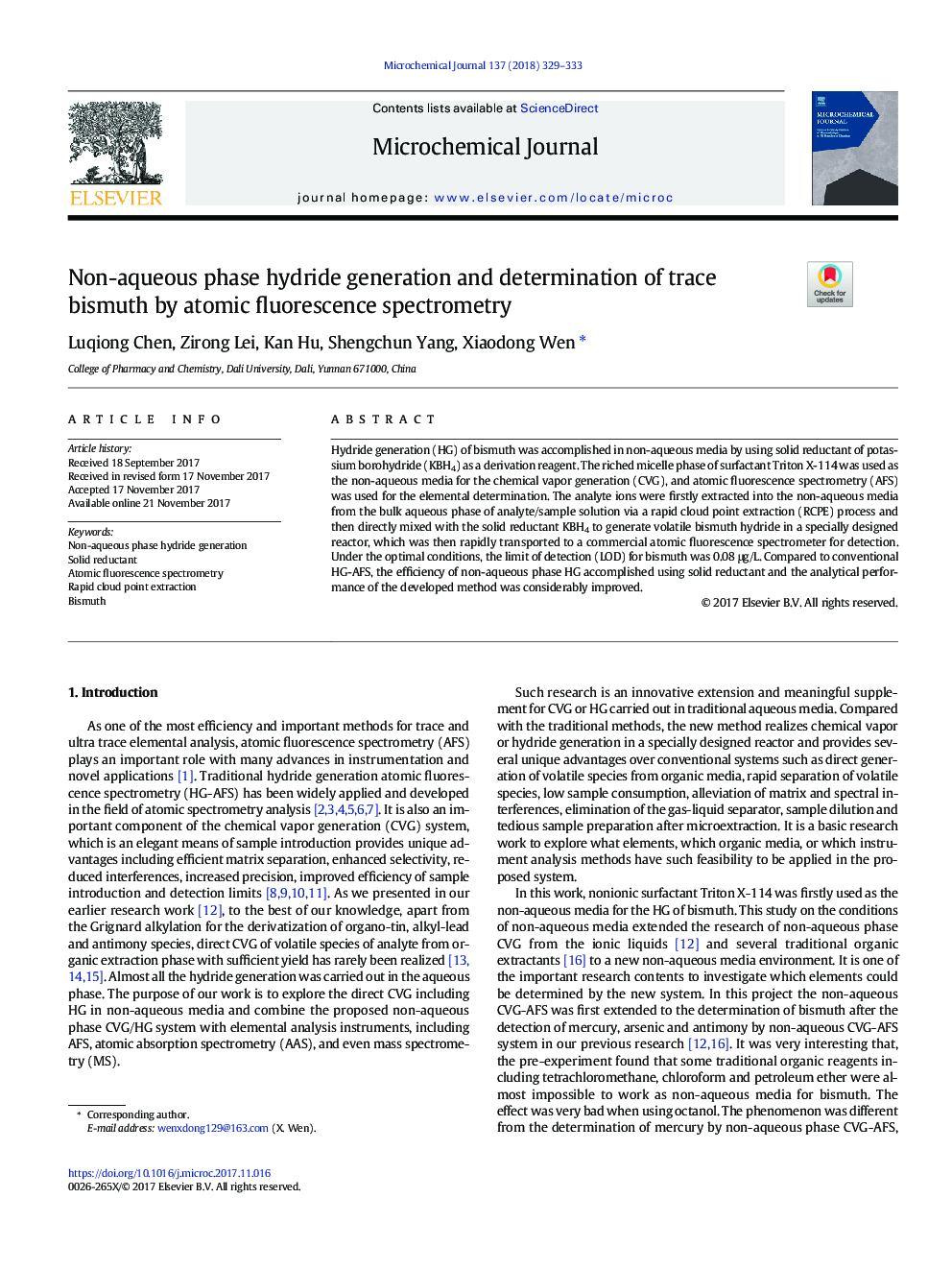| Article ID | Journal | Published Year | Pages | File Type |
|---|---|---|---|---|
| 7641002 | Microchemical Journal | 2018 | 5 Pages |
Abstract
Hydride generation (HG) of bismuth was accomplished in non-aqueous media by using solid reductant of potassium borohydride (KBH4) as a derivation reagent. The riched micelle phase of surfactant Triton X-114 was used as the non-aqueous media for the chemical vapor generation (CVG), and atomic fluorescence spectrometry (AFS) was used for the elemental determination. The analyte ions were firstly extracted into the non-aqueous media from the bulk aqueous phase of analyte/sample solution via a rapid cloud point extraction (RCPE) process and then directly mixed with the solid reductant KBH4 to generate volatile bismuth hydride in a specially designed reactor, which was then rapidly transported to a commercial atomic fluorescence spectrometer for detection. Under the optimal conditions, the limit of detection (LOD) for bismuth was 0.08 μg/L. Compared to conventional HG-AFS, the efficiency of non-aqueous phase HG accomplished using solid reductant and the analytical performance of the developed method was considerably improved.
Related Topics
Physical Sciences and Engineering
Chemistry
Analytical Chemistry
Authors
Luqiong Chen, Zirong Lei, Kan Hu, Shengchun Yang, Xiaodong Wen,
